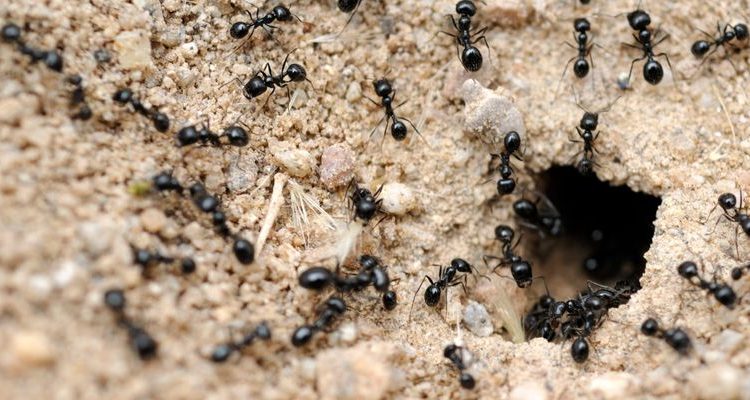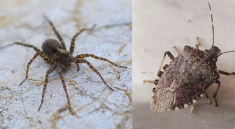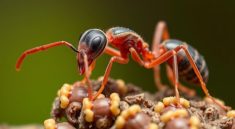Simple Machines Forum – Beneath rocks, logs, and garden soil lies a bustling world filled with cooperation, precision, and silent communication. Ant colonies, though small in size, operate with incredible complexity. Scientists have long admired how these social insects coordinate massive tasks like food collection, nest construction, and colony defense. But recent research has unveiled something far more fascinating.
Ants may be using communication strategies so subtle and intricate that they challenge our understanding of animal intelligence. These hidden systems go beyond simple pheromones and touch, involving biochemical signals, vibrational cues, and even electromagnetic sensitivity that are just beginning to be explored.
Pheromones Are Only the Beginning
Most biology textbooks mention that ants use pheromones to lay down trails to food or warn others of danger. While this is true, it only scratches the surface. Ants can release a variety of pheromones from multiple glands, with each type carrying different meanings depending on context and concentration.
What has surprised entomologists is how ants combine different pheromones simultaneously. For instance, some species can overlay two separate signals in the same area. One attracts foragers while another indicates how urgently the food should be collected. The combination of signals is like creating an emotional tone to the message.
These discoveries suggest ants are not just reacting to simple chemical cues but are decoding layered information that resembles a kind of language with grammar and nuance.
Subsonic Vibrations in the Ant World
Another hidden layer of communication is vibration. Some ant species tap their abdomens against surfaces to produce rhythmic pulses that travel through the ground. These vibrations can warn of danger, recruit help during nest building, or call for reinforcements during colony defense.
In leafcutter ants, for example, vibrational signals are used to synchronize cutting efforts and optimize teamwork when transporting plant material. When scientists played recorded vibrations back to the colony, ants responded as if real workers were calling out.
This shows that vibrational communication is not just incidental but intentional and recognized by the entire colony. It is a form of tactile messaging that does not rely on visual or auditory input, making it perfect for dark underground environments.
Antennal Touch Codes and Social Hierarchies
One of the most visually observable yet least understood forms of communication in ants is antennal contact. When ants meet, they often touch antennae rapidly and repeatedly. These encounters are more than just greetings. Research has shown that ants can determine caste, role, age, and health condition through brief antennal interactions.
This tactile examination allows ants to reinforce social roles and coordinate tasks. For example, when a forager returns from a food run, it may use antennal codes to recruit others, adjust workloads, or convey changes in resource availability.
Some species even use specific antennal movements as a way to exchange fluid droplets containing hormones and symbiotic bacteria. These exchanges may play a role in regulating colony behavior and immune system balance.
Chemical Eavesdropping and Misdirection
A newer area of research is focused on chemical eavesdropping and signal manipulation between ant species. Certain predatory ants and parasitic insects have evolved the ability to mimic the pheromones of other species. This allows them to infiltrate colonies undetected or lead workers into traps.
Some slave-making ants even use false alarm pheromones to distract their host colonies during raids. While the host ants scramble to defend the wrong part of their nest, the invaders steal their brood.
This kind of misinformation warfare implies that ants are not only interpreting chemical messages but also making decisions based on deception and context. The presence of such strategies forces scientists to reconsider the cognitive boundaries of insect behavior.
Electromagnetic Sensitivity in Ant Navigation
Perhaps the most mind-boggling discovery in recent years is the possibility that ants may sense electromagnetic fields. Desert ants are known for their astonishing navigational skills. They travel hundreds of meters from their nests and return with remarkable precision using polarized light and visual landmarks.
New experiments suggest they may also be using Earth’s magnetic field as a kind of compass. While this ability is still being verified, preliminary data shows changes in ant orientation when exposed to altered magnetic environments.
If proven true, this would mean that ant communication may include inputs and signals well outside the range of human perception.
Implications for Biology and Robotics
Understanding how ants coordinate such complex behavior without centralized control could revolutionize more than entomology. Engineers and computer scientists are already applying these lessons in swarm robotics, artificial intelligence, and decentralized computing.
By mimicking ant behavior, machines can operate in groups, adapt to changing environments, and complete tasks without constant human oversight. These systems are being tested for use in agriculture, search and rescue, and even planetary exploration.
Learning from ants may help us solve challenges in our own systems of communication and cooperation.
Read More: The Secret Mobility Device That Feels Like Magic for Seniors
What We Still Don’t Know
Despite decades of study, ant communication continues to surprise and puzzle researchers. Much of their coordination happens on micro timescales and molecular levels that are hard to observe. Scientists are now combining high-speed video, genetic tools, and chemical analysis to uncover more secrets hidden in the world beneath our feet.
What is clear is that ants do not need voices or language to work together. Their communication is silent but sophisticated, intuitive yet intentional. It is a powerful reminder that intelligence comes in many forms and that some of the most advanced strategies in nature happen at the smallest scales.


